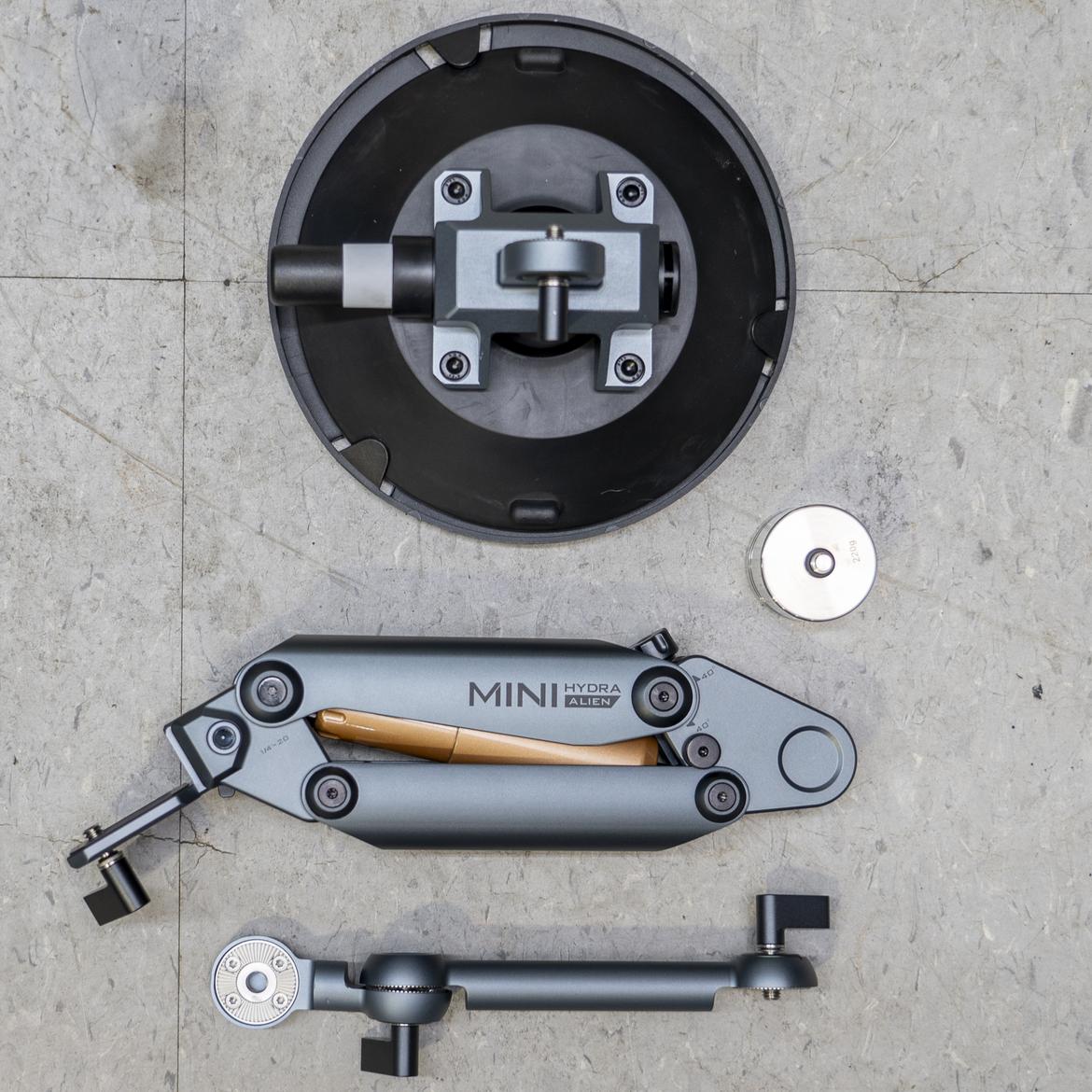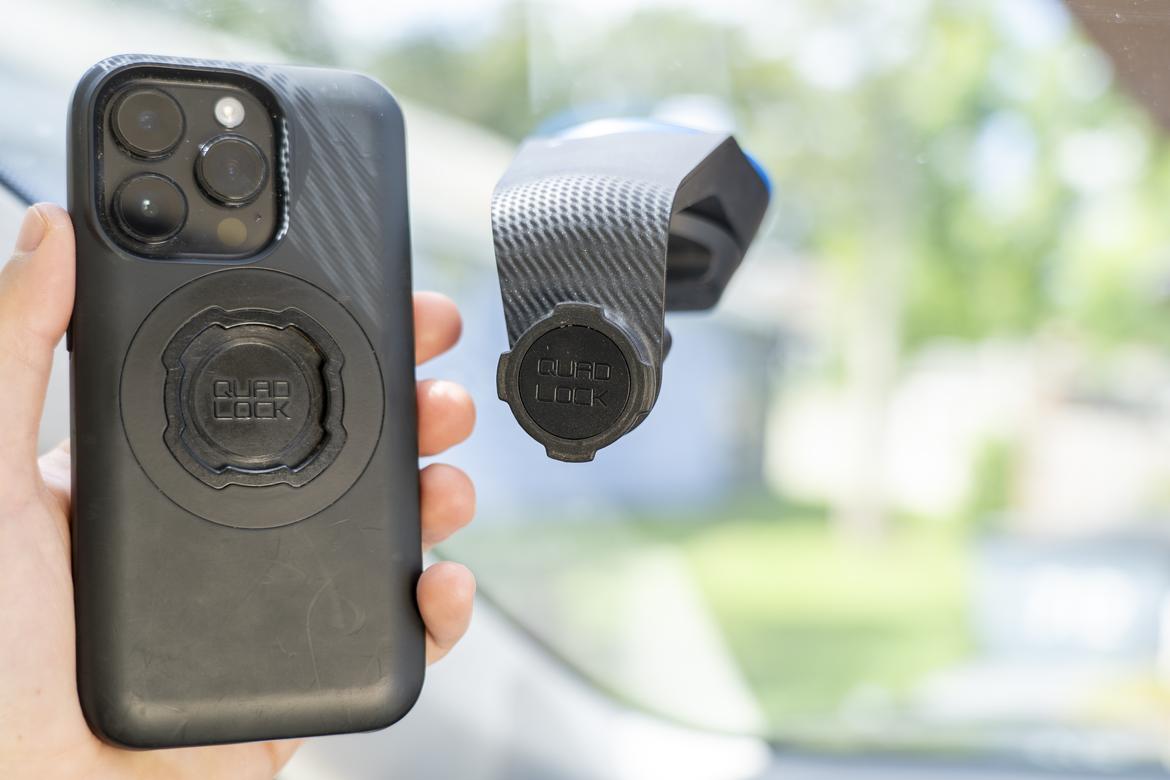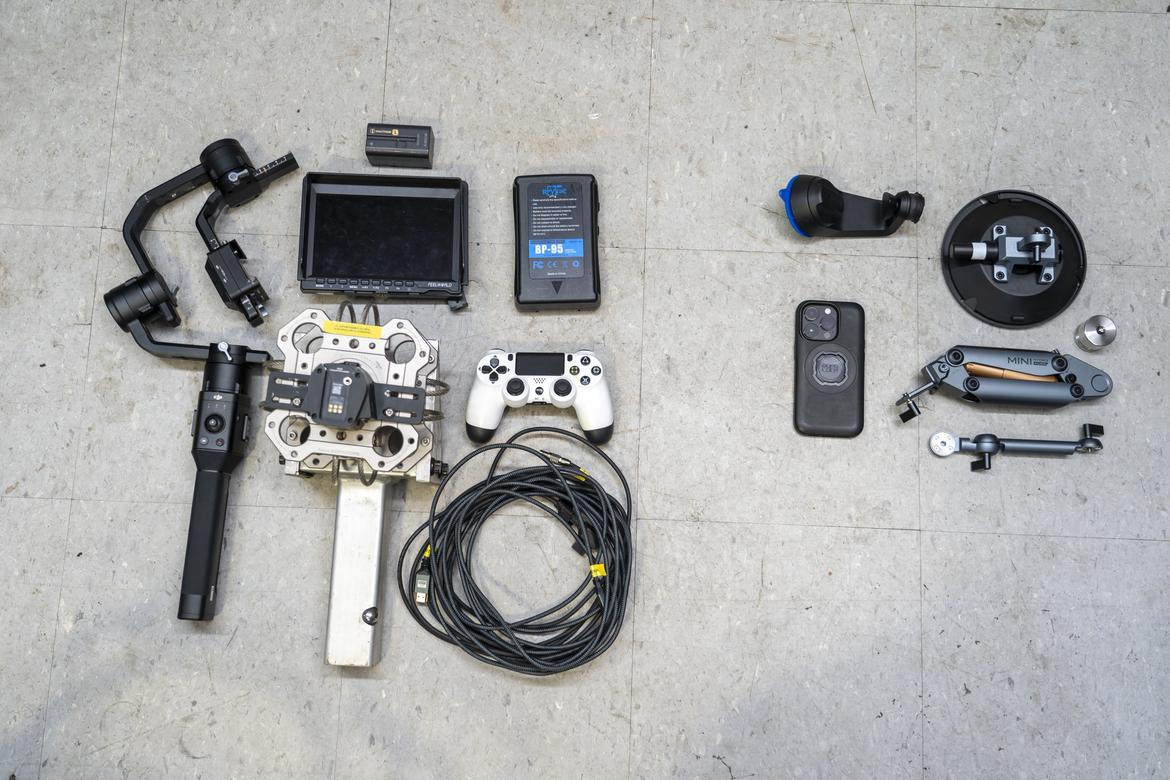Thank you for reading this post, don't forget to subscribe!
Build a better mousetrap? When shooting car-to-car video, as we learned, perhaps that’s not always the best answer.
Just a few years ago, we built our own rig that mounted a Sony a7 III mirrorless camera (about $2000 with the lens) on a DJI Ronin-S gimbal (about $325) onto a custom trailer hitch mount ($100 plus fab work).
A monitor (another $100) allowed a camera operator to frame the shot from inside the camera car. To move the camera, we used a PlayStation controller (about $18). An $85 battery powered everything.
While complex and clunky, the rig worked okay and used some bits that we already had–like the camera, gimbal and hitch mount. Let’s call it suitable enough, and figure it would cost a little more than $2600 to duplicate if starting from scratch.
However, there were some other costs involved. First, the camera car required a hitch, while the camera operator needed some specialized knowledge–and couldn’t drive the camera car at the same time. The entire setup also filled a 21x14x10-inch case, so not a tiny package.
While not a deal-breaker, the setup involved running wires down the side of the camera car. Minimum setup time was 15 minutes, while camera placement was dictated by the location of the hitch.
Our current setup is much easier to use. It works on nearly any car and requires less than 5 minutes for setup. It’s also much easier to operate and would only cost a grand or so to duplicate. Plus, it doesn’t require a dedicated operator.
Here’s how we cracked the code.
The Camera: DJI Osmo Pocket 3
The first piece of the puzzle was the camera, and we’re now using the DJI Osmo Pocket 3 for all of our car-to-car shoots. Basically, it’s a camera sensor and gimbal from a DJI drone that shoots 4K video. The companion phone app can track objects, monitor the feed and control the camera, all without wires.
That tracking function is huge, as it ensures that the hero car is always in the frame. Once set up, the camera can basically operate by itself once we leave the paddock. This setup can also connect to DJI mics for clean audio. (This camera also works very well off the car, providing beautiful, stabilized 4K footage even when walking around.)
How much? The camera lists for about $800, although we scored ours on sale at Costco for $532. While we did give up the flexibility of interchangeable lenses from our old mirrorless camera setup, the streamlined process now allows us to capture more footage with fewer people and far less hassle. (The Osmo only has digital zoom, however, while the Sony could use any lens from the catalog.)
What about a GoPro? The latest, the GoPro Hero13, lacks the tracking ability found with the DJI. At about $330, though, it does cost less.
The Mount: Tilta Hydra Alien Mini

What really delivers those Hollywood looks is the camera mount. The Tilta Hydra Alien Mini Car Mounting System is a small, shock-absorbing arm that can suction cup to really any car. The result: buttery-smooth footage.
Our homemade rig struggled to damp the micro jitters; the camera was likely just too heavy for the setup, preventing us from perfectly nailing the shot.
The Tilta Hydra is almost as easy to set up as a regular action camera mount and damps those bumps and jitters. It’s almost like a smaller version of the company’s full-size $2800 setup aimed at the motion picture industry. We bought the smaller version from B&H for $189.
The Monitor: Quad Lock Suction Mount and Phone Case

Our phone controls the camera and monitors the feed, so we needed a secure mount in the camera car.
We have an older Panavise PortaGrip Phone Holder with Windshield Mount that’s good but, sometimes, allows the phone to slip out–so not ideal. The modern equivalent of this mount now sells for about $45.
So we checked out Quad Lock, a popular brand in this sphere with mounts aimed at cars, bikes and motorcycles.
We picked up the brand’s standard Car Suction Mount for about $40. The company also offers a heavy-duty mount, but the standard one has been just fine for us.

To attach the phone to the mount, you’ll need the brand’s own case. They usually start around $35. The Quad Lock setup keeps the phone within reach for easy setup before rolling. Thanks to the camera’s tracking software, once it is set up, the operator can now simply drive the camera car.

Total cost for everything minus the phone? Right around $1000, so less than our old setup while allowing us to operate with two people instead of three. We can now use any vehicle as the camera car.
Of course, you could spend even less when assembling a car-to-car rig, but at least for us, that seemed to compromise quality. This setup has been our sweet spot.



